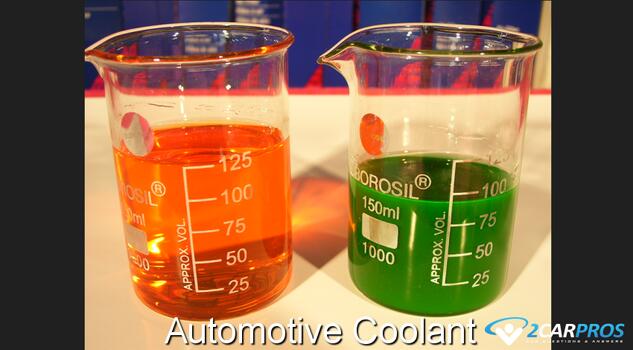Introduction
A vehicles engine coolant (antifreeze) is one of the most essential fluid of your car no matter if the engine is gasoline, diesel or eclectically powered. This fluid is meant to remove heat from specific components while providing corrosion and freeze protection. Over the years car manufactures have developed different color coolants which represent various capabilities and performance characteristics.
These colors can signify the type of additives used, such as organic acid technology (OAT), inorganic additive technology (IAT), or hybrid organic acid technology (HOAT). Due to this situation their can be confusion on which coolant should be used which we go over in the following guide. Coolant color alone does not guarantee compatibility, refer to your vehicle’s owner manual before mixing or replacing coolant.
Caution!
When working with coolant you should remember that it is highly toxic and should be kept away from animals. All waste coolant should be recycled at your nearest auto parts store. Never dump coolant into storm drains!
Manufactures Specific Coolant
- BMW - Blue Nitrate-free HOAT (NAP-free HOAT)
- Chrysler/Dodge - Pink or Orange Hybrid OAT (HOAT)
- Ford - Yellow Hybrid OAT (HOAT)
- General Motors - Orange Organic Acid Technology (OAT)
- Honda - Blue Phosphated HOAT (P-HOAT)
- Hyundai/Kia - Green Phosphated HOAT (P-HOAT)
- Mazda - Green Phosphated HOAT (P-HOAT)
- Mercedes-Benz - Blue Nitrate-free HOAT (NAP-free HOAT)
- Nissan - Blue Phosphated HOAT (P-HOAT)
- Porsche - Pink or Purple Silicated HOAT (Si-OAT)
- Subaru - Blue Phosphated HOAT (P-HOAT)
- Tesla - Green, Blue or Orange depending on model. Nitrate-free HOAT (NAP-free
HOAT)
- Toyota - Red or Pink Phosphated HOAT (P-HOAT)
- Volkswagen/Audi - Pink or Purple Silicated HOAT (Si-OAT)
- Volvo - Blue Nitrate-free HOAT (NAP-free HOAT)
Mixing Antifreeze Colors: What Happens?
Because the coolant chemical compositions are different if you mix colors it can lead to unexpected problems such as:
- Formation of sludge or gel, which can block radiator and heater core passages.
- Reduced corrosion protection, leading to external and internal leakage.
- Shortened the coolant's lifespan
Cooling System Maintenance
Every cooling system goes through hot and cold cycles as part of its normal operation, while these temperatures change they will degrade the active chemicals inside the coolant which will weaken the fluid's ability to protect the engine from rust and freezing. If fact, if the cooling system service is neglected the coolant will turn acidic and start eating away at the very components it was designed to protect such as gaskets and aluminum engine parts such as the intake manifold.
This is why draining the coolant and refilling the cooling system on a regular basis is mandatory for taking care of your car's engine. Some people think its a good idea to test the coolant and check its ability to safeguard against rust and freeze point, these tests are notoriously wrong. If you believe there might be a problem with your car's antifreeze drain and refill the system with fresh coolant.
Conclusion
Choosing the right antifreeze requires understanding your vehicle’s requirements, you should:
- Check the owner’s manual
- Use this guide
- Ask one of our experts
Credits
This guide knowledge base was created by the 2CarPros Team, and by Ken Lavacot: Automobile repair shop owner and certified master automobile technician of over 30 years. If you have question or need help please ask one of our experts we are happy to help. Please visit our 2CarPros YouTube Channel for additional car repairs.

